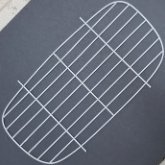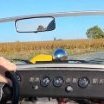-
Posts
468 -
Joined
Personal Information
-
Biography
Car guy from age 10
-
Location
Northern Virginia
-
Interests
Cars & Guns
-
Occupation
Engineer
-
Se7en
Caterham
Recent Profile Visitors
5,867 profile views
-
This can be considered subjective, but I would think it is similar to a 420. The 420 has the same power, and the number Caterham uses for the name is directly related to the power of the engine.
-
There are Esprit parts. There is also a very nice Esprit. Selling the Esprit is the first priority and sorting the parts that need to go with the car. I will keep you informed.
-
There might be. The first car to go was a very nice Esprit. I do not know if they got all the parts. I will try to find out. The shop is close to Frederick Md
-
I lost a friend who was in the race car preparation business. His wife now has to close the shop and sell everything. He started as a Porche tec and still did Porche work. He has every Porche specialty tool. There are 17 cars to sell. Two Lotus Europa's. One is a twin cam. There are a couple of SCCA production cars. A MG midget is one of them. There is a SCCA formula C car. There is an air cooled 911 targa that has a problem with the pedals, but the drive train and rest of the car are in good condition. There is a large quantity of Porche and Lotus new and used parts. He was in business for a long time and accumulated a lot of stuff. Do you need a Ford F350 tow vehicle or a trailer?
-
You might look at Performance electronics or Innovate motorsports.
-
You did not need to disconnect the drive shaft from the differential. When you put it back, use blue thread locker and clean the bolts and what the bolt screw into. The drive shaft will come out of the transmission tail shaft. There isn't anything holding it in. To get the engine out you have to have it on an angle and all the transmission oil will spill out where the drive shaft goes. My car has a ford transmission and they do not have drain plugs. Your car might have a drain. They make plugs to put in the hole when the drive shaft is removed, but make sure you have a pan under the back of the transmission to keep from getting oil everywhere. When you put the engine back it, you have to get under the car and start the driveshaft back in the back of the transmission before the engine is completely down in the engine compartment.
-
I have an older car, but it is probably the same. First you might not have to remove the column. My car is a 2000 S-3 with a Zetec engine. I did not need to remove the column until I added an extension on the water pump housing. I wanted to get a better fit for the hose. If you look just where the steering column comes through the fire wall in the engine compartment. The shaft that extends down to the steering rack goes in a tube that extends from the back of the steering wheel. A portion of this tube is cut away where the shaft from the steering rack sticks up the tube. The shaft has a flat cut on it and the flat on the shaft lines up with the part of the tube sticking through the fire wall. The shaft and the tube are held in place by a clamp. The clamp has two bolts on one side and a set screw and jam nut on the other. Losen the jam nut and back the Allan screw out. Then remove the two bolts. The clamp will separate in two pieces. At the steering rack end is a universal joint. Remove the bolt that clamps the shaft to the universal joint. You can then push the shaft back out of the universal joint. You can take the shaft out the steering wheel side, but it involves removing the lock and that is a big job. Much easier to remove the radiator and bring it out the front. I do not know your car, but I suspect removing the steering shaft is not required.
-
We have, or had, a confusion about names. The steering rack assembly is made up of a housing, a round gear, and a rack gear. There are bearings and other things, but the basic function is controlled by those components. You turn the steering wheel and that turns the round gear. The round gear is connected to a long flat gear called a rack gear. All of this is inside a housing that holds it all together in one place. On the ends of the rack gear are joints that allow the tie rods to move up and down and side to side, but not in and out. What is centered are the joints on the end of the rack gear. When you project a line vertically through the center of the lower inner control arm bushing to the center of the inner upper control arm bushing the inner tie rod joint (joint on the end of the rack gear) should be centered on the projected line. The other part of eliminating bump steer is the outer joints, and the center of the tie rod end need to have the same geometry. If one tie rod is longer than the other the joints are not on the imaginary line through the suspension joints. When you hear racers talking about bump steering their cars, they are improving the accuracy of the components being in the correct alignment to each other. There are always tolerances, and the racers are trying to improve the tolerances. On regular street cars the manufacturers often design in bump steer to make the cars understeer. When you are trying to drive a car quickly you want to judge the tire slipping, and you are looking at very small amounts of slip. If the steering angle is changing because of bump steer the car isn't as predictable.
-
The tires are made in Portugal. I just ordered a bunch of stuff from Redline. I thought auto parts were 25%
-
What you are doing measuring the threads works. Someone said the rack wasn’t centered. I should have quoted that statement. This misunderstanding probably has more to do with the meaning of rack. The rack meaning the housing is centered. I measure the tie rod length from the blocks that hold the rack down.
-
I was just on NOVA"s web site and they list ZZR and ZZS tires like they are available. NOVA Motorsports.pdf
-
On my car with a quick steering rack the wheel turns about one and one half turns in each direction. Maybe a little more, it has been a while since I did it. Are you going lock to lock on turning the wheel?







